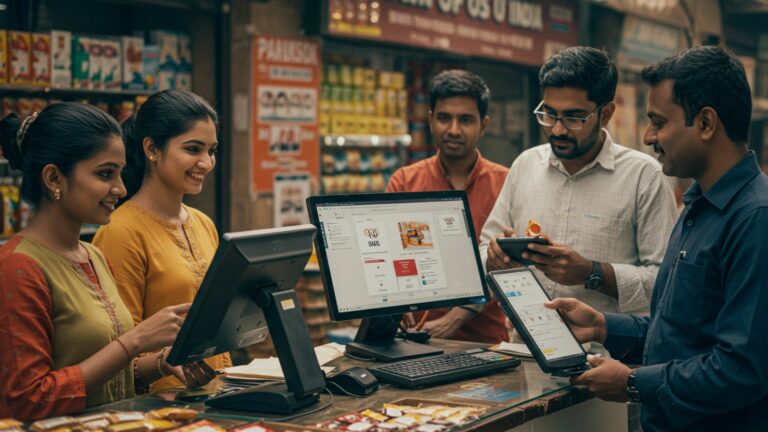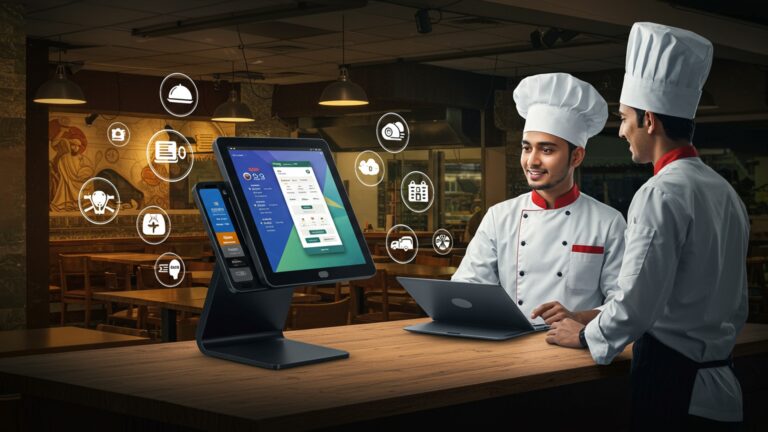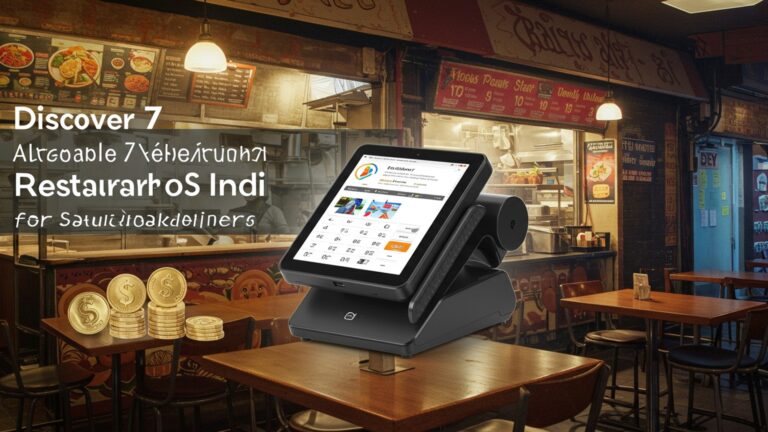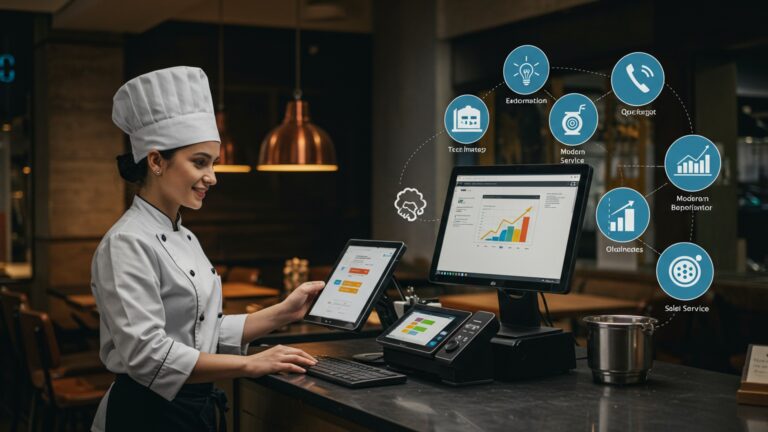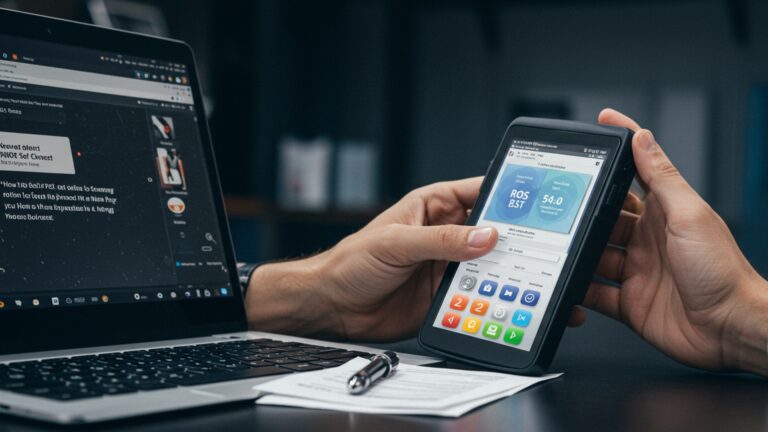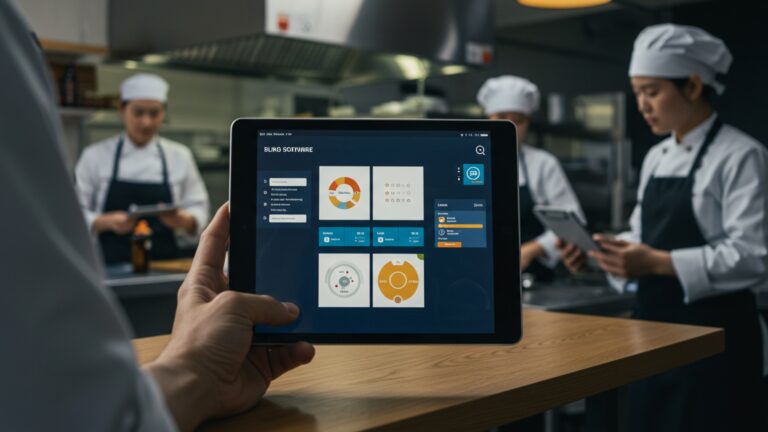7 Essential Benefits of Online Ordering POS Systems in India
India’s dynamic digital landscape, propelled by UPI adoption and a pervasive e-commerce culture, has fundamentally reshaped consumer expectations, urging businesses from metropolitan culinary hubs to growing tier-2 city retailers towards integrated digital solutions. Relying solely on conventional point-of-sale systems is no longer viable; modern enterprises demand a cohesive synergy between physical operations and the accelerating trend of online ordering. This evolution isn’t merely about meeting demand; it represents a strategic imperative for operational scalability, enhanced customer experience. competitive advantage. Implementing an advanced online ordering POS India system is now essential for businesses to streamline workflows, reduce manual errors. seamlessly manage both in-store and digital transactions in this fast-paced market.
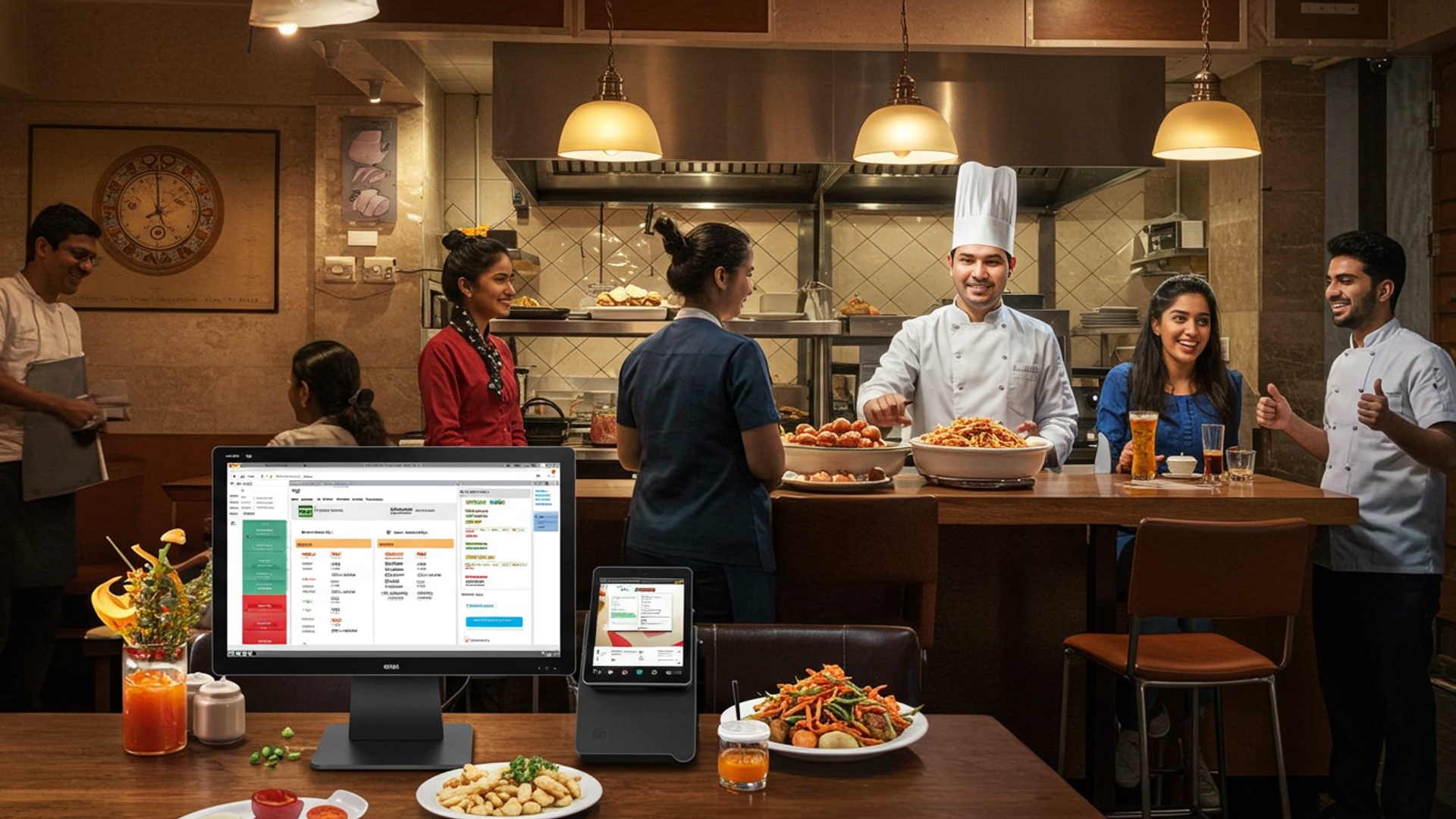
Understanding Online Ordering POS Systems in India
In today’s rapidly evolving digital landscape, businesses, especially in the food and beverage and retail sectors, are constantly seeking ways to enhance efficiency and customer satisfaction. A pivotal technology driving this transformation is the Online Ordering Point-of-Sale (POS) system. At its core, an Online Ordering POS system is an integrated platform that combines the functionalities of traditional point-of-sale software with capabilities for accepting and managing orders placed online.
Think of it as the central nervous system for a modern business. When a customer places an order via a website, a dedicated mobile app, or even third-party aggregators, this system processes the transaction, communicates with the kitchen or inventory, manages payments. often coordinates delivery or pickup. For the dynamic market in India, where digital adoption is soaring and customer expectations for convenience are higher than ever, a robust
Online ordering POS India
solution is no longer a luxury but a necessity.
Key components typically include:
- Online Storefront
- Order Management System
- POS Integration
- Payment Gateway Integration
- Inventory Management
- Delivery Management
A branded website or app for customers to browse menus/products and place orders.
A dashboard for staff to view, accept, process. track incoming online orders.
Seamless connection with the in-store POS for unified sales, inventory. customer data.
Support for various digital payment methods popular in India, such as UPI, net banking, credit/debit cards. digital wallets.
Real-time updates on stock levels to prevent overselling and streamline procurement.
Tools for assigning orders to delivery personnel, tracking progress. communicating with customers.
1. Enhanced Customer Experience and Convenience
The modern Indian consumer values speed, ease. personalization. An Online ordering POS system directly addresses these needs, significantly elevating the customer experience. Imagine a customer in Mumbai craving their favorite biryani; instead of calling and potentially waiting on hold, they can simply open an app, browse a clear menu with enticing images, customize their order. pay within minutes, all from their smartphone.
- 24/7 Accessibility
- Personalized Ordering
Customers can place orders anytime, anywhere, freeing them from business hours or geographical limitations. This is particularly beneficial in India’s bustling cities where people have varied schedules.
Systems can remember past orders, dietary preferences. offer tailored recommendations, making the ordering process faster and more enjoyable. For instance, a coffee shop using an
Online ordering POS India
can suggest a customer’s usual latte with their preferred milk alternative based on their history.
By allowing customers to input their orders directly, the chances of miscommunication and order errors are drastically reduced compared to phone orders.
Integration with India’s diverse digital payment ecosystem (UPI, Paytm, Google Pay, etc.) offers unparalleled convenience, catering to a wide range of customer preferences.
Invest in a system that offers an intuitive, mobile-responsive online interface and integrates popular local payment methods to cater to the broad Indian consumer base.
2. Increased Sales and Revenue Streams
Implementing an Online ordering POS system opens up new avenues for growth and directly impacts the bottom line. It’s not just about managing existing orders; it’s about generating more business.
- Expanded Reach
- Higher Order Value
- New Revenue Channels
- Reduced Lost Sales
Businesses are no longer limited by their physical storefront. An online presence allows them to reach a wider audience across different localities, attracting new customers who might not have discovered them otherwise. A small bakery in Delhi, for example, can now receive orders from customers residing in neighboring suburbs.
Online menus can be strategically designed to encourage impulse purchases, upsells. cross-sells. Features like “Add a drink?” or “Customers also bought…” are effective digital sales techniques that are harder to implement over the phone.
Beyond direct orders, many systems integrate with third-party delivery aggregators (like Zomato or Swiggy in India), allowing businesses to tap into their vast customer bases while streamlining order management through a single POS.
By handling a higher volume of orders efficiently, businesses can avoid losing sales due to busy phone lines or overwhelmed in-store staff during peak hours.
A mid-sized restaurant chain in Bangalore saw a 25% increase in online sales within six months of implementing a comprehensive
Online ordering POS India
system. This was primarily attributed to their expanded delivery radius and the ease with which customers could customize and place large orders for corporate lunches.
3. Improved Operational Efficiency
Beyond customer-facing benefits, the true power of an Online ordering POS system lies in its ability to streamline back-end operations, making businesses run smoother and more profitably.
- Automated Order Flow
- Real-time Inventory Management
- Reduced Staff Workload
- Streamlined Reporting
Online orders are directly sent to the kitchen display system (KDS) or printer, eliminating manual transcription errors and speeding up preparation times. This means less chaos and more accurate orders.
As items are ordered, stock levels are automatically updated. This prevents overselling, alerts staff when items are low. simplifies inventory reconciliation. For a grocery store or a multi-cuisine restaurant in India, managing diverse inventory can be complex; automation is key.
By automating order taking and processing, staff can focus on customer service, food preparation, or other critical tasks rather than being tied up on the phone or at the counter.
All sales data, whether online or in-store, is consolidated into a single system, making end-of-day reconciliation and financial reporting much simpler and faster.
Comparison: Manual vs. Online Ordering POS
| Feature | Manual Ordering Process | Online Ordering POS System |
|---|---|---|
| Order Taking | Phone calls, walk-ins; prone to human error. | Customer self-service via app/web; direct to kitchen. |
| Payment Processing | Cash, limited card options; manual reconciliation. | Integrated digital payments; automatic reconciliation. |
| Inventory Updates | Manual tracking, delayed updates. | Real-time, automated updates. |
| Staff Efficiency | High time spent on order entry and payments. | Staff focuses on preparation and customer service. |
| Data Accuracy | Risk of transcription errors. | High accuracy, direct customer input. |
4. Data-Driven Decision Making
One of the most valuable assets of a modern business is data. An Online ordering POS system collects a wealth of details that, when analyzed, can provide profound insights to drive strategic decisions.
- Sales Analytics
- Customer Insights
- Operational Performance Metrics
- Menu Engineering
Gain a clear understanding of what sells best, during which hours. through which channels (online vs. in-store). This allows for menu optimization, promotional planning. staffing adjustments.
Track customer purchasing habits, frequency of orders, average spend. popular items. This data can be used to create targeted marketing campaigns, loyalty programs. personalized offers, fostering stronger customer relationships.
Monitor metrics like average order preparation time, delivery efficiency. peak ordering periods. This helps identify bottlenecks and areas for improvement in service delivery.
Use sales data to identify popular and profitable items, as well as those that might need to be removed or revamped. This is crucial for restaurants to maintain a fresh and appealing menu.
Regularly review the analytics dashboard provided by your
Online ordering POS India
system. Look for trends in sales, customer behavior. operational efficiency to make informed decisions about your business strategy.
5. Cost Savings and Reduced Overhead
While there’s an initial investment, an Online ordering POS system often leads to significant cost savings and reduced operational overhead in the long run.
- Reduced Labor Costs
- Lower Error-Related Costs
- Elimination of Physical Menu/Catalog Printing
- Optimized Inventory
- Streamlined Accounting
Automation of order taking and processing can reduce the need for additional staff, especially during peak hours. This means fewer employees dedicated solely to answering phones or processing manual orders.
Fewer order errors mean less food wastage (for restaurants), fewer returns. reduced need for re-delivery or customer compensation, all of which save money.
Digital menus can be updated instantly and cost nothing to print, saving substantial amounts, especially for businesses with frequently changing offerings.
Real-time inventory tracking minimizes waste from spoilage or expired products and prevents overstocking, leading to more efficient capital allocation.
Automated sales reports and integrated payment processing simplify accounting tasks, potentially reducing the need for extensive manual data entry or external accounting services.
A chain of quick-service restaurants across India found that by shifting a significant portion of their orders to their online platform, they were able to reallocate staff from order-taking roles to food preparation and customer service, improving both efficiency and the in-store experience without increasing total headcount.
6. Seamless Integration and Scalability
A modern Online ordering POS system is designed to be a central hub, capable of integrating with various other business tools and scaling as your business grows. This modularity is crucial for long-term sustainability.
- Integration with Other Software
A good
Online ordering POS India
can integrate with accounting software (like Tally in India), CRM systems, loyalty programs. third-party delivery platforms. This creates a unified ecosystem for all business operations.
Systems are built to easily integrate with multiple payment gateways, allowing businesses to offer diverse payment options and adapt to new payment technologies as they emerge in India.
As your business expands – perhaps opening new outlets, increasing online order volume, or diversifying product lines – the system can grow with you. Cloud-based solutions are particularly adept at this, allowing easy addition of new users, locations, or features without significant infrastructure changes.
Many advanced systems offer Application Programming Interface (API) access, allowing businesses to custom-integrate with unique in-house tools or develop bespoke functionalities.
Most modern Online ordering POS systems are built using a microservices architecture and leverage RESTful APIs for integration. This allows different components (e. g. , order management, inventory, payment) to communicate independently, making the system more robust and easier to update or scale. For example, an API call to update inventory might look conceptually like this:
POST /api/v1/inventory/update
Content-Type: application/json { "itemId": "SKU12345", "quantityChange": -1, "locationId": "STORE_DELHI_001"
}
7. Competitive Advantage and Brand Building
In a competitive market like India, differentiating your business and building a strong brand identity are paramount. An Online ordering POS system plays a vital role in achieving both.
- Modern Image
- Enhanced Brand Presence
- Customer Loyalty Programs
- Direct Customer Communication
- Resilience and Adaptability
Offering a seamless online ordering experience projects a modern, tech-savvy image, appealing to a younger, digitally native demographic. This helps businesses stand out from competitors relying solely on traditional methods.
A branded online ordering platform (website or app) strengthens brand recognition and allows businesses to control their customer journey, unlike relying solely on third-party aggregators.
Many systems come with built-in or integrated loyalty features, allowing businesses to reward repeat customers, offer exclusive discounts. build a community around their brand, fostering long-term loyalty.
The system provides direct channels for feedback, allowing businesses to quickly address concerns and build trust. It also enables direct marketing efforts, such as sending promotional offers or updates.
Businesses with robust online ordering capabilities are better equipped to adapt to market shifts, such as public health crises that might restrict physical movement. This resilience is a significant competitive advantage.
Leverage your
Online ordering POS India
system to collect customer feedback and implement a loyalty program. Actively promote your branded online ordering channels over third-party platforms to strengthen direct customer relationships and control your brand narrative.
Conclusion
Embracing an online ordering POS system isn’t merely an upgrade; it’s a strategic imperative for businesses in India navigating the digital-first consumer landscape. From my own observations, I’ve seen how integrating these systems, much like the rapid adoption of UPI for payments, transforms operational efficiency and customer engagement. Don’t just observe the shift towards seamless digital experiences; be at the forefront. My personal tip is to prioritize a system that offers robust inventory synchronization and real-time analytics, as these are game-changers for identifying sales trends and managing demand effectively, especially during peak seasons like Diwali or the IPL. The time to act is now. By empowering your business with an intuitive online ordering POS, you’re not just selling products or services; you’re building a future-ready enterprise poised for sustained growth and unparalleled customer satisfaction.
More Articles
How to Choose the Best POS Software in India Your Essential Guide
How to Choose the Best Cloud POS for Your Indian Restaurant 5 Tips
Mastering Cloud Based POS Software How to Boost Your Business Efficiency
How to Choose the Best Restaurant POS Software for Your Business
How to Select and Implement POS Software A Comprehensive Guide for Business Success
FAQs
How does an online ordering POS system actually help Indian businesses make more money?
It significantly expands your reach beyond your physical location, allowing customers to order from anywhere. This means more orders, potentially larger order values. access to new customer segments, all contributing to increased revenue and market share in India.
Will my restaurant operations become more efficient with one of these systems?
Absolutely! Online ordering POS systems automate the order-taking process, reduce manual errors. streamline kitchen communication. This frees up your staff, reduces wait times. ensures smoother, faster service delivery, ultimately improving overall operational efficiency.
What’s the big deal for my customers? Do they really benefit from online ordering?
For customers, it’s all about convenience and choice. They can browse your menu at their leisure, customize orders easily. pay securely online, all from their phone or computer. This hassle-free experience leads to higher customer satisfaction and repeat business.
Can these systems give me useful data about my business?
Yes, they’re a goldmine for data! You get insights into popular dishes, peak ordering times, customer preferences. sales trends. This valuable data helps you make smarter business decisions, optimize your menu. run more effective promotions tailored for the Indian market.
Are online ordering POS systems expensive, or do they actually save costs in India?
While there’s an initial investment, these systems often lead to significant cost savings. You can reduce the need for dedicated order-taking staff, minimize errors that lead to wasted food. optimize inventory. The increased sales also far outweigh the operational costs, offering a strong ROI.
How do these systems help reduce order mistakes?
By digitizing the entire process from customer order to kitchen display, the chances of miscommunication or human error are drastically cut. Customers input their own orders. these go directly to the kitchen, ensuring accuracy and fewer frustrating mistakes for both staff and customers.
Is it easy to manage my inventory with an online ordering POS?
Many modern online ordering POS systems come with integrated inventory management features. They track ingredient usage with every order, alert you when stock is low. help you forecast demand. This prevents stockouts, reduces waste. makes ordering supplies much more efficient for your Indian business.
Why should an Indian business consider getting an online ordering POS now?
In today’s digital age, customers expect the convenience of online ordering. Having such a system gives you a significant competitive edge, allowing you to meet evolving customer demands, expand your market reach. position your business for future growth in the dynamic Indian market.

